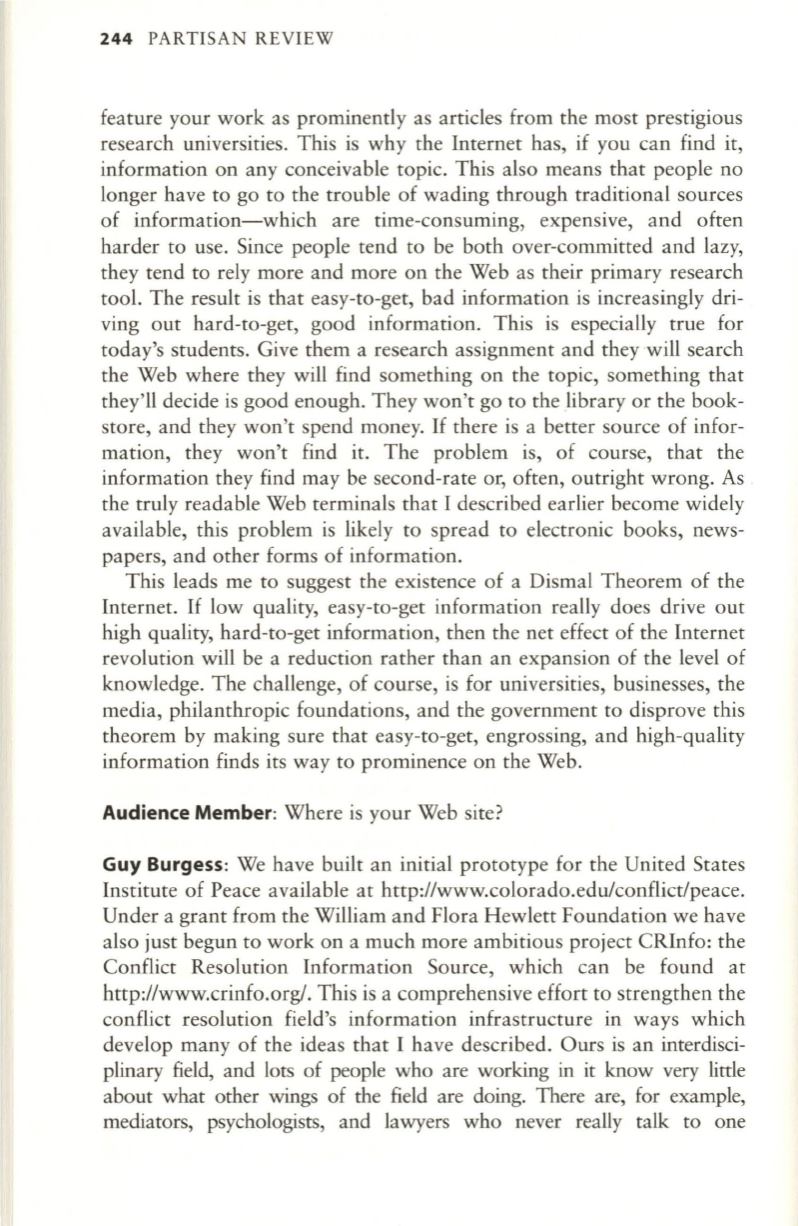
244
PARTISAN REVIEW
feature your work as prominently as articles from the most prestigious
research universities. This is why the Internet has, if you can find it,
information on any conceivable topic. This also means that people no
longer have to go to the trouble of wading through traditional sources
of information-which are time-consuming, expensive, and often
harder to use. Since people tend
to
be both over-committed and lazy,
they tend to rely more and more on the Web as their primary research
tool. The result is that easy-to-get, bad information is increasingly dri–
ving out hard-to-get, good information. This is especially true for
today's students. Give them a research assignment and they will search
the Web where they will find something on the topic, something that
they'll decide is good enough. They won't go
to
the library or the book–
store, and they won't spend money.
If
there is a better source of infor–
mation, they won't find it. The problem is, of course, that the
information they find may be second-rate or, often, outright wrong. As
the truly readable Web terminals that I described earlier become widely
available, this problem is likely to spread to electronic books, news–
papers, and other forms of information.
This leads me
to
suggest the existence of a Dismal Theorem of the
Internet.
If
low quality, easy-to-get information really does drive out
high quality, hard-to-get information, then the net effect of the Internet
revolution will be a reduction rather than an expansion of the level of
knowledge. The challenge, of course, is for universities, businesses, the
media, philanthropic foundations, and the government to disprove this
theorem by making sure that easy-to-get, engrossing, and high-quality
information finds its way to prominence on the Web.
Audience Member:
Where is your Web site?
Guy Burgess:
We have built an initial prototype for the United States
Institute of Peace available at
.
Under a grant from the William and Flora Hewlett Foundation we have
also just begun
to
work on a much more ambitious project CRlnfo: the
Conflict Resolution Information Source, which can be found at
. This is a comprehensive effort
to
strengthen the
conflict resolution field's information infrastructure in ways which
develop many of the ideas that I have described. Ours is an interdisci–
plinary field, and lots of people who are working in it know very little
about what other wings of the field are doing. There are, for example,
mediators, psychologists, and lawyers who never really talk to one


